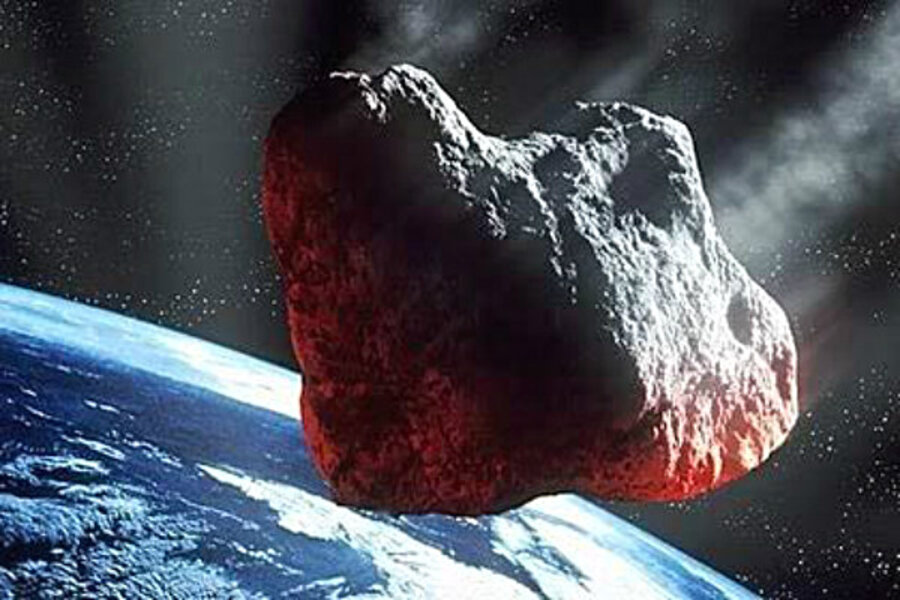'Asteroid 2032:' Will 2013 TV135 crash into Earth in 2032? Probably not.
Loading...
Last week, Ukranian scientists observed an asteroid on a collision course with Earth – in 19 years. The astronomers sent word out to their colleagues around the globe, several of whom independently confirmed the discovery of 2013 TV135, as it has been lovingly named.
2013 TV135 buzzed past Earth last month, on Sept. 16, and is due for a return visit on Aug. 26, 2032, at which point it could collide with Earth – or just whiz past again. If it does collide with our planet, the asteroid's large size and high speed will combine to make an explosion equivalent to a 2,500 megaton bomb, NASA estimated. That's equivalent to 50 of the largest atomic bombs ever created, and 125,000 times the size of the bomb dropped on Nagasaki.
Should you worry?
"The current probability of no impact in 2032 [is] about 99.998 percent," said Don Yeomans, manager of NASA's Near-Earth Object Program (NEOP) in a NASA press release entitled Asteroid 2013 TV135 – A Reality Check. That's about a 1 in 49,000 chance of impact.
So maybe we should hold off on panicking.
The asteroid is certainly massive. It's difficult to measure dark objects against a dark sky, but the NEOP has constrained it to between 200 and 800 meters across. So it's at least as big as the Astrodome, and might be a full half-mile across. That's not the size of Texas, but it's plenty big.
Gennady Borisov from the Crimean Astrophysical Observatory discovered it on Oct. 12, he told Itar-Tass news agency. “The first observations show that it moves quickly and is relatively close.”
Within a week, the discovery had been confirmed by astronomers in Italy, Spain, the UK, and Russia’s Siberian republic of Buryatia, plus NASA, though NASA emphasized that the details are still tentative.
"With only a week of observations for an orbital period that spans almost four years, its future orbital path is still quite uncertain," said NASA's press office, "but this asteroid could be back in Earth’s neighborhood in 2032."
2013 TV135 follows an elliptical orbit around the sun. At its closest approach to the sun, it's still almost 100 million miles away, reaching most of the way to Jupiter before circling back in. Assuming 2013 TV135 doesn't slam into us in 19 years, it will fly by Earth again in 2047, when its odds of colliding drop down to 1 in 6,000,000.
NASA's NEOP office has been tracking near-Earth asteroids since 1995. They developed the "Torino scale" to rate the likelihood that an asteroid poses a threat to Earth. The scale goes from 0 to 10. Level 0 means no threat at all, Level 10 means we're toast. Of the 10,334 near-Earth asteroids they have identified, nearly all have a Torino level of zero. Two asteroids, including 2013 TV135, are at Level 1.
According to NASA, Level 1 on the Torino scale isn't even worth bothering astronomers about: "A routine discovery in which a pass near the Earth is predicted that poses no unusual level of danger. Current calculations show the chance of collision is extremely unlikely with no cause for public attention or public concern. New telescopic observations very likely will lead to re-assignment to Level 0."
In other words, it's probably not the end of the world as we know it.
After all, a 1 in 49,000 chance is about equal to your odds of rolling snake eyes three times in a row. Put another way, it's 16 times less likely than your odds of ever getting struck by lightning. So let's not panic quite yet.








